Since our last update on the Tri-County survey project in Dauphin County, the Commonwealth Heritage Group and ASC Group survey teams have crossed the Susquehanna River and begun surveying communities in Cumberland and Perry Counties.
As part of the Disaster Planning for Historic Properties Initiative, we are continuing to survey historic resources located in flood-prone communities by gathering data to assist in flood hazard mitigation efforts. Previously we discussed the town of Lykens, and the enduring impact flooding from Tropical Storm Agnus had on the once bustling community.
Today we will examine the ways in which a waterway had a very different impact on a community and explore how a mighty creek gave rise to the small village of Blain in Perry County.
James Blaine’s Gristmill
Located in western Perry County, the small town of Blain owes much of its existence to Sherman’s Creek, which winds along the southern and eastern border of the Borough. The town was initially formed from part of a 445-acre tract warrented to James Blaine in 1765.
Recognizing the valuable resource the creek provided, Blaine constructed a gristmill on the southwest side of the village crossroads at Shearman’s Creek and Manassa Road in 1777. The gristmill would serve as an enduring industry in the town for more than two hundred years, forty of them under the Blaine family ownership.
The town would eventually honor its founder by officially adopting the family name in 1847. Several years after Blaine’s death, the gristmill was sold in 1803 to William Douglass who constructed a two-story stone dwelling near the east entrance of town.
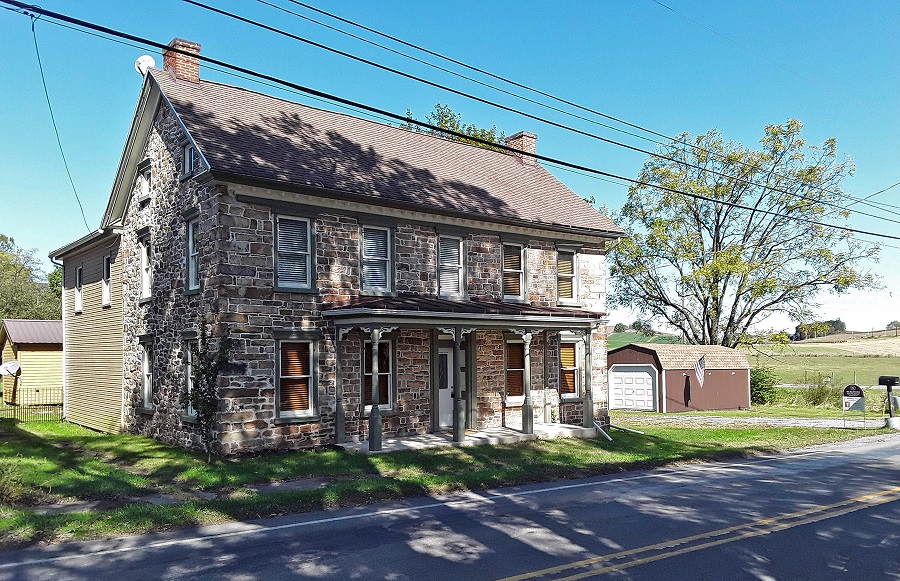
The original Blaine homestead is no longer extant, but a historical marker placed in 1938 by the Perry County Historical Society marks the house’s former location, and honors James’ eldest son, General Ephriam Blaine, who served as “Commissary General of Purchases” for the Continental Army during the Revolutionary War. [1]
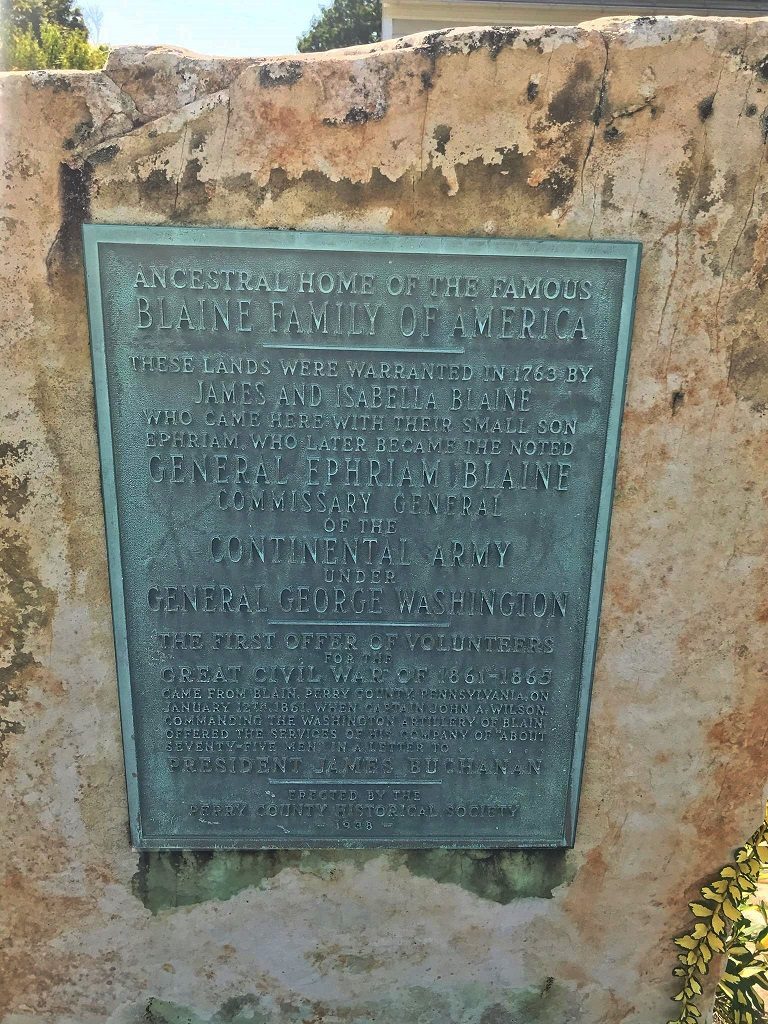
Douglass Mills Post Office
The mill’s next proprietor David Moreland would also leave his mark on the small community by establishing the first town post office at Douglass Mills, further reinforcing the gristmill as the cornerstone of the community. Isaac Stoke purchased the mill in 1854 and constructed an elevated brick dwelling immediately north of the mill.
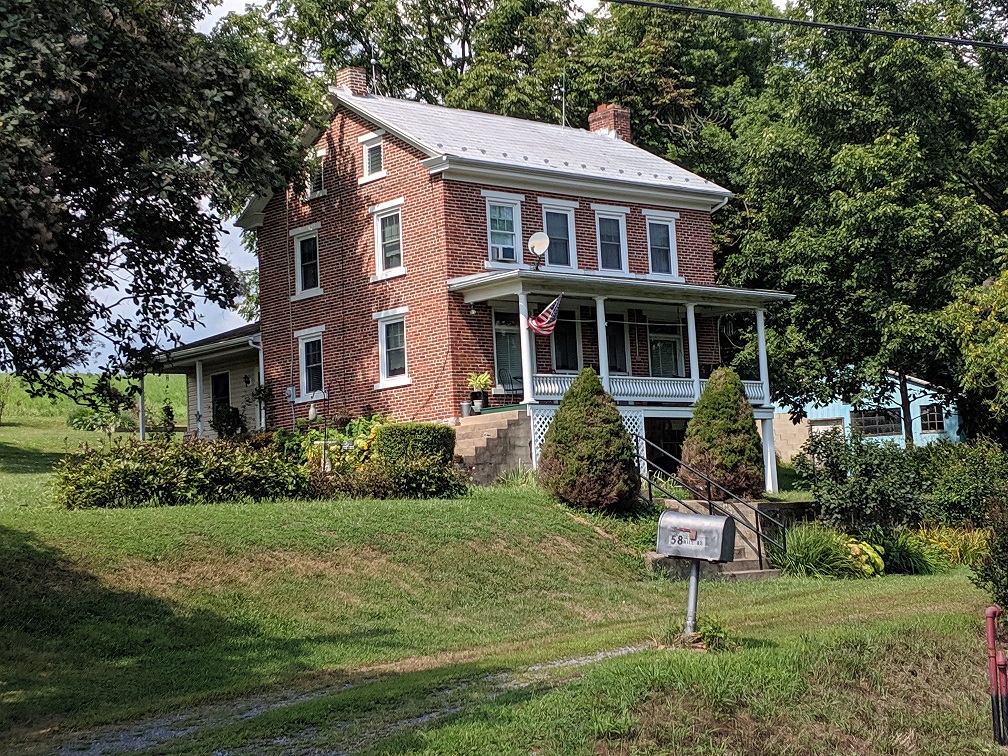
By 1875, the gristmill was rebuilt by Stoke; it was improved with the addition of an engine and boiler in 1895. The gristmill would continue to operate under several different owners into the twentieth century. The gristmill finally closed in 1989, and at the time was recognized as the longest continuously operating gristmill in Perry County.[2] The gristmill lives on today as a community landmark and is under repair by its current owner.
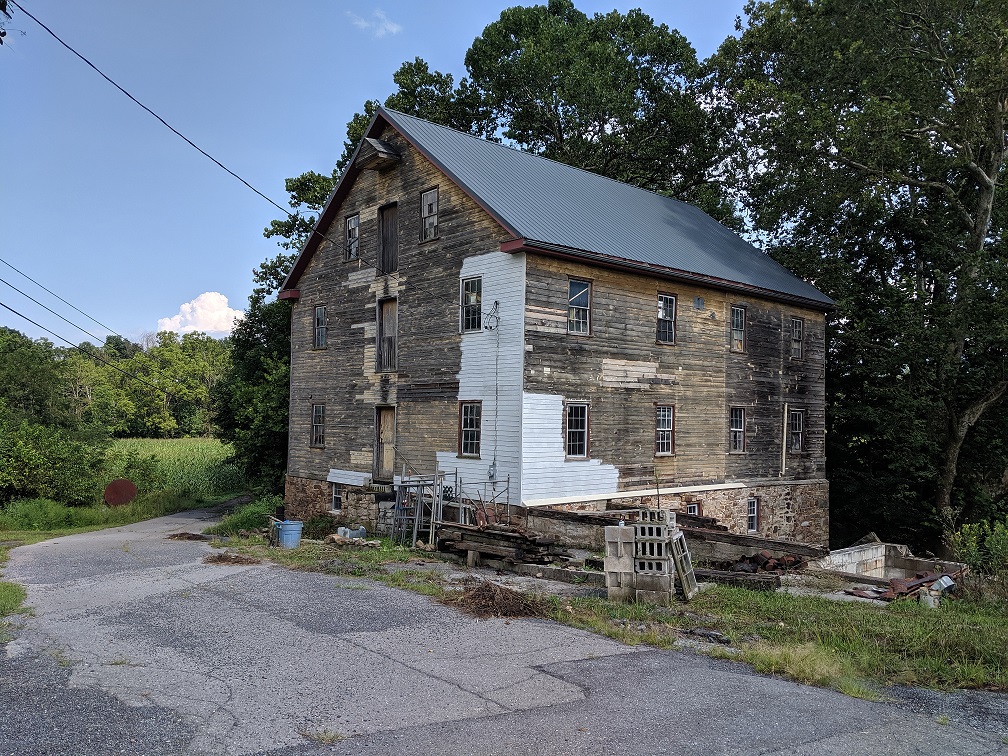
The Arrival of the Railroad
Like many small Pennsylvania towns, the arrival of the Newport & Sherman’s Valley Railroad to Blain in 1892 would dramatically the landscape of the community. By this point, the thriving village was already home to more than a dozen businesses and small industries including several dry goods stores, a photography gallery, a wagon shop, a tinware store, a hotel, a blacksmith shop, two gristmills, and a tannery.
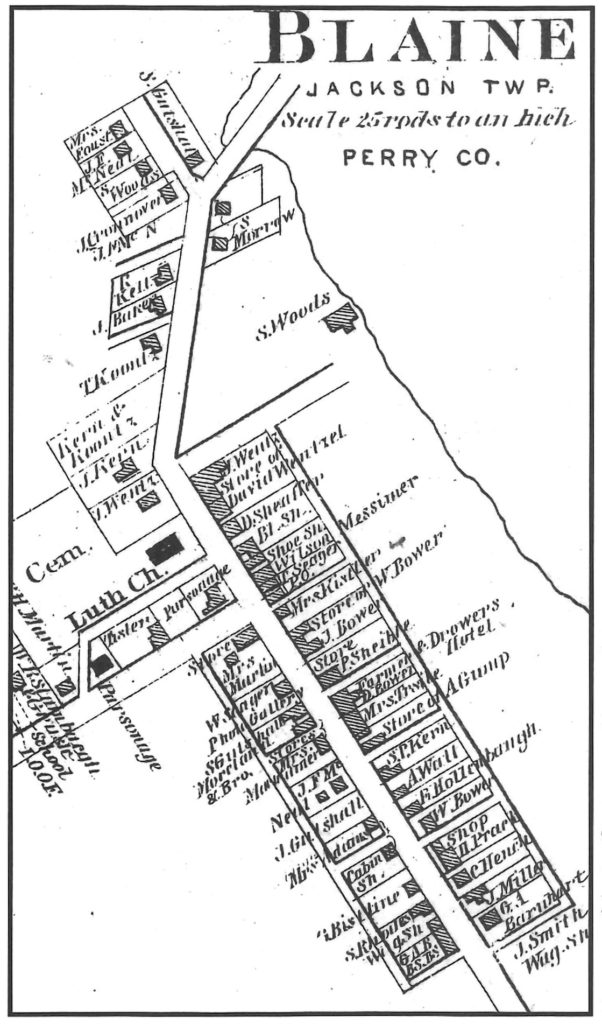
The new railroad line allowed for shopkeepers to have specialty goods shipped directly to town, and several manufacturing enterprises developed directly along the railroad tracks to easily export their products. The railroad also played an important role in the annual Blain Picnic. Held on the second Saturday of August at Sherman’s Park, the celebration drew crowds of thousands from the surrounding communities.
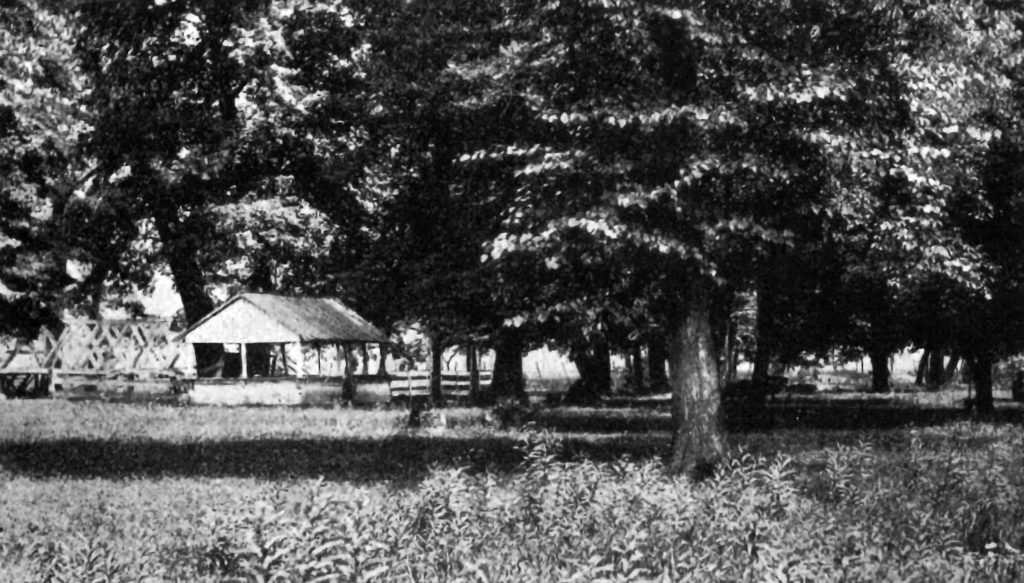
Source: Linda Gilmore and Fran Gutshall.
The annual tradition began in the 1850s, but the arrival of the railroad allowed for picnic goers to arrive by train on special cars added for the event.[3] To this day the Blain Picnic Grounds still attract thousands of visitors each fall for the Sherman’s Valley Heritage Day to celebrate the town’s history, agriculture, and local craftspeople over a three-day weekend event.
The Blain train station ended passenger service in 1928 but was given new life when it was restored by Blain Lion’s Club in 1983. It remains open as a historic site.
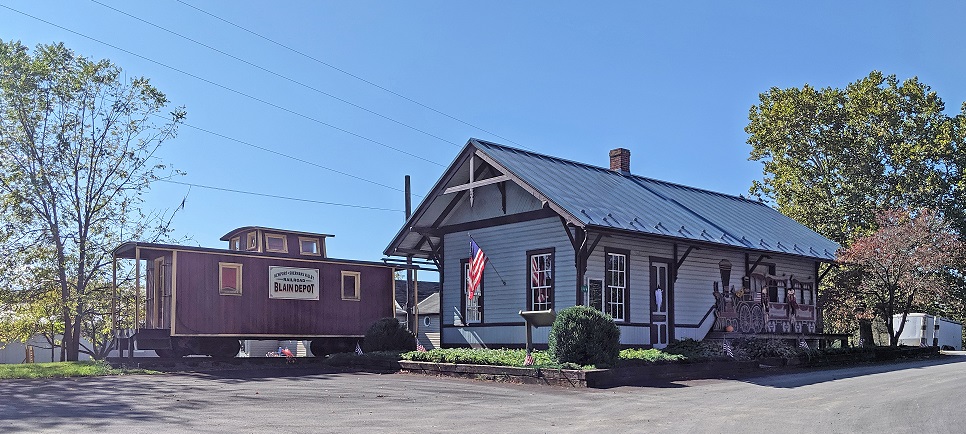
With the end of rail service to Blain and the Great Depression in the years following, many of the once thriving businesses closed, and commercial storefronts were converted into private residences.
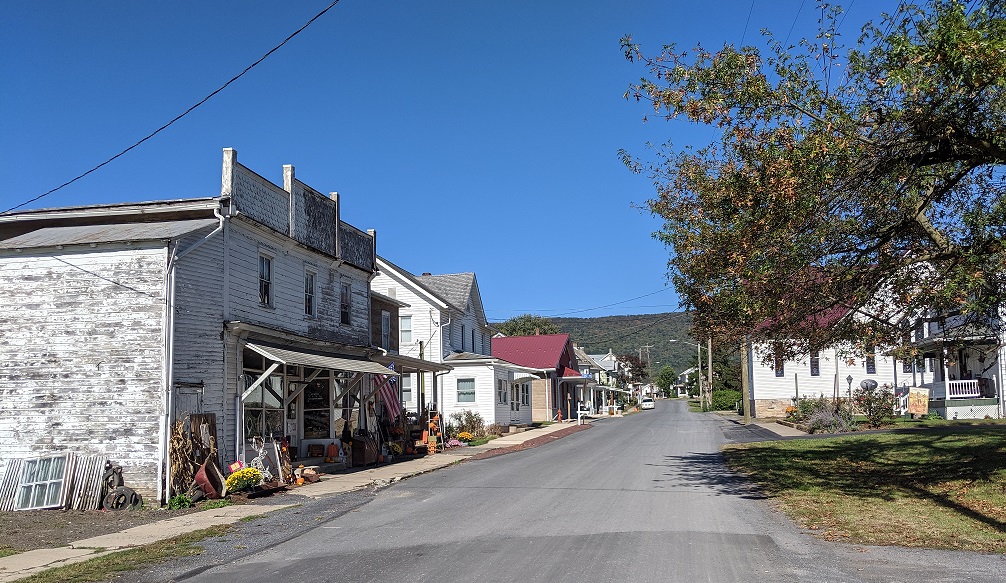
Automobiles made it easier for residents to commute longer distances and many residents left. Today part of the town’s former commercial core remains with the Blain Market and Blain Hotel and Restaurant.
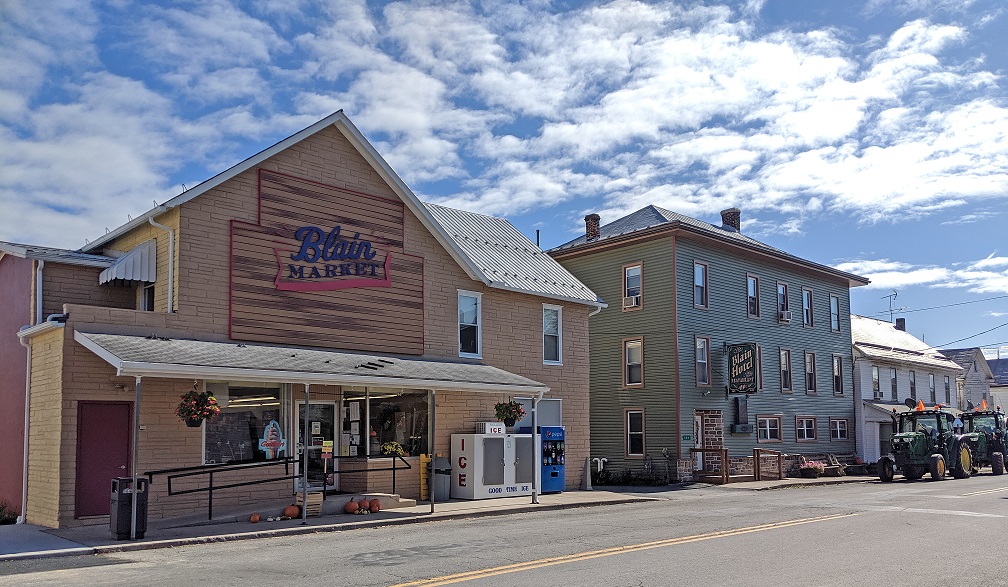
Although the town is no longer dependent on the power from the Shermans’s Creek as it once was, the town’s history is intrinsically linked to this important waterway.
Stay tuned for the last posting of our series where we wrap up
our flood survey and share more stories about the interesting communities we
have explored along the way.
[1] Linda Martin Gilmore, A Small Town Rich in History: Blain Pennsylvania, 1755-1955 (USA: Linda Martin Gilmore, 2017), pg. 9.
[2] Gilmore, A Small Town Rich in History, (USA: Linda Martin Gilmore, 2017), pg. 77.
[3] Ibid, 110.
Candice N. Strawley serves as the Regional Director and Architectural Historian at Commonwealth Heritage Group’s West Chester, Pennsylvania office. She serves as Project Manager on the Tri-County Historic Resource Survey project. Ms. Strawley specializes in the identification, evaluation and documentation of historic buildings and holds a M.A. in Historic Preservation from the University of Delaware.
Comment Policy
PHMC welcomes and encourages topic-related comments on this blog. PHMC reserves the right to remove comments that in PHMC’s discretion do not follow participation guidelines.
Commenters and Comments shall be related to the blog post topic and respectful of others who use this site.
Commenters and Comments shall not: use language that is offensive, inflammatory or provocative (this includes, but is not limited to, using profanity, obscene, or vulgar comments); disparage other commenters or people; condone illegal activity; identify the location of known or suspected archeological sites; post personal information in comments such as addresses, phone numbers, e-mail addresses or other contact details, which may relate to you or other individuals; impersonate or falsely claim to represent a person or an organization; make any commercial endorsement or promotion of any product, service or publication.
If you would like to comment on other topics not related to this blog post but related to PHMC, please fill out the PHMC Contact Us Form.
Sherman’s Creek is a permanent fixture in our lives. We kayak it every year, multiple times, and I sing it’s virtues to anyone who will listen.
It is the Best creek in all of PA in my opinion.
You will see bald eagles and white tailed deer crossing and snapping turtles the size of trash can lids!
I am so warm inside thinking of the people trying to preserve this treasure on “my” creek. Thank you for your efforts.
We will be sure to make it to the festivities this time!
I love hearing about the history of this place and it is on my list for a visit!
This is Great I love learning about the history of the area that surrounds me.
THANK YOU
My maternal ancestors came from Blain & New Germantown. My Gr-Grandmother (Jennie Barbara Sheriff-Watts) was “the hired girl working for Simon& Amanda Watts-Kern in the 1870’s-1880’s. There are Stump’s, Mumper’s, Sheriff’s, Watts’s in my family.
Thanks Candace for a great article about Blain. As in many small towns across the state, locals are very community-minded ad work hard for the betterment of their town.
My grandma and grandpa had a hugh hunting camp outside of New Germantown. Some years later my grandma Lillian Yeagley had the first permanent residence in the Campgrounds. I spent ALOT of time up here as a child. Now that my husband and I have retired we’ve moved back to right outside Blain. It good to be back. I do have a question . was there ever a barber shop in Blain or New Germantown?
My great grandfather James Rickard owned the general store in Blain in the early 1900s. He ran the store into his 90s and died at age 98. His wife’s name was Annie. Their daughter Sarah Florence (my grandmother) married Austin Roy Kern. My father James Simon Kern was one of their four children. The children were raised in Middletown. I passed through Blain about 25 years ago and visited the cemetery where I have relatives. I would love to have any information you might have about my great grandfather and his store. I am willing to swap photos with you. I don’t have a good period photo of the store. Thank you.